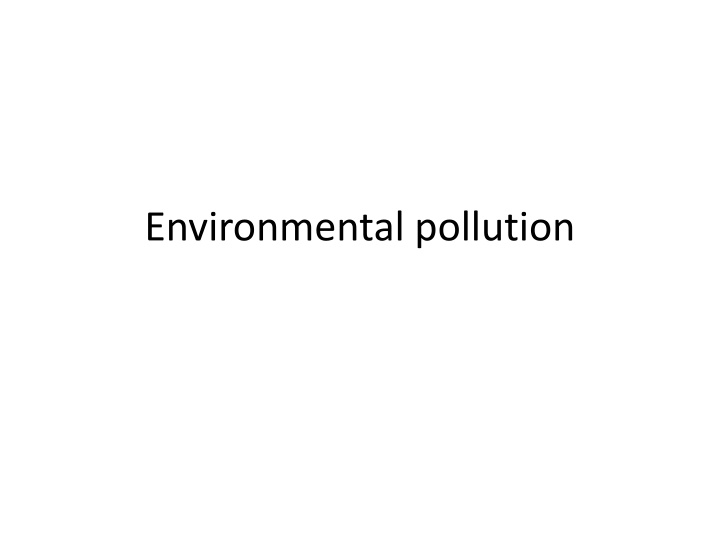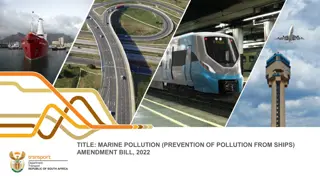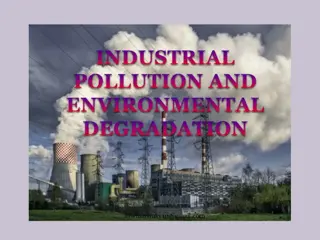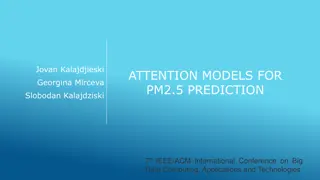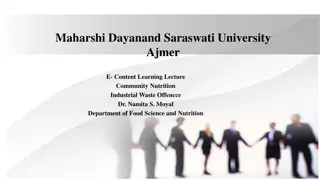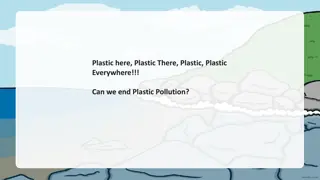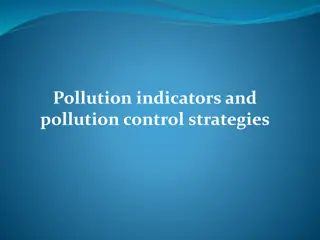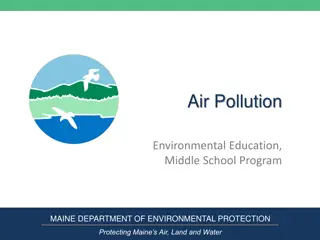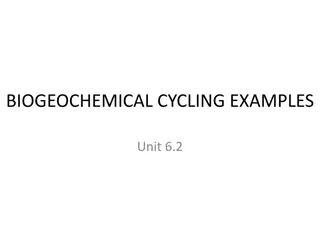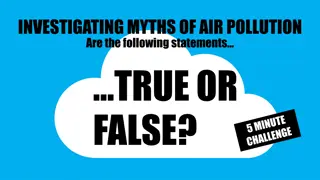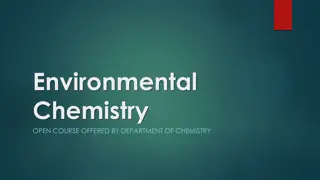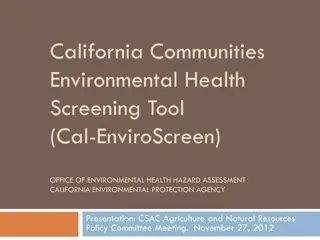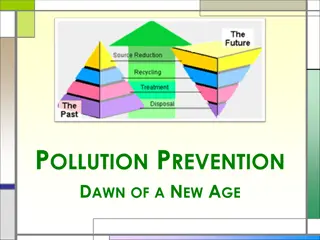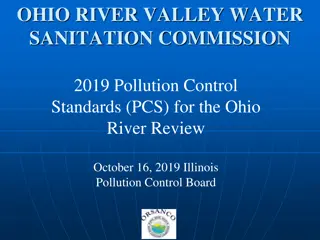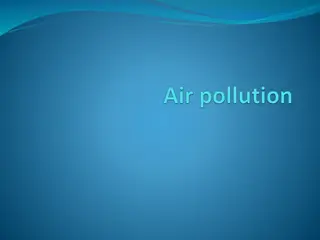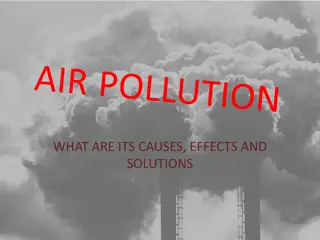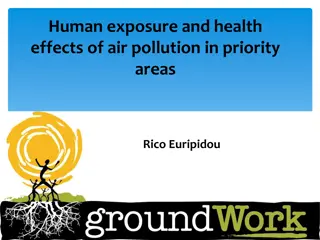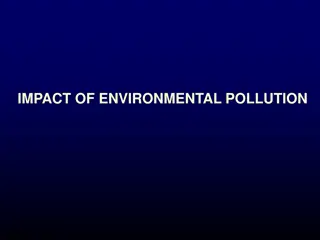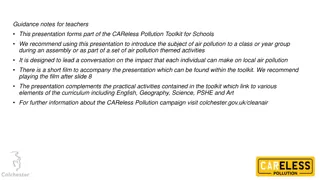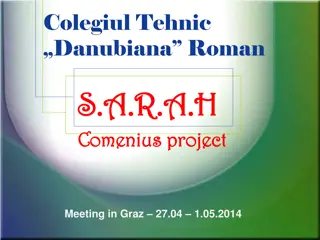Environmental pollution
Pollution is a major challenge affecting air, water, and soil due to human activities or natural disasters. Learn about types of pollution, categories of pollutants, and measures to combat air pollution in this informative content.
Download Presentation

Please find below an Image/Link to download the presentation.
The content on the website is provided AS IS for your information and personal use only. It may not be sold, licensed, or shared on other websites without obtaining consent from the author.If you encounter any issues during the download, it is possible that the publisher has removed the file from their server.
You are allowed to download the files provided on this website for personal or commercial use, subject to the condition that they are used lawfully. All files are the property of their respective owners.
The content on the website is provided AS IS for your information and personal use only. It may not be sold, licensed, or shared on other websites without obtaining consent from the author.
E N D
Presentation Transcript
Pollution: it is the charge in the physical, chemical or biological feature of air, water and soil which directly or indirectly affects the human welfare. Pollution may be a result of human activities or natural catastrophes. Example of natural pollutions are volcano eruptions, forest fires, flood, ..etc. Today, the problem of pollution has become a major challenge and man has to fight and overcome his gigantic problem before it swallows him and his existence.
Pollution could be classified based on nature of pollutants: a. Decomposable or biodegradable: these are naturally occurring organic compounds which are degraded by biological or microbial agent such as domestic sewage. b. Non decomposable or non biodegradable : these are not decomposed or degraded over a long period of time such as plastic.
Air pollution: Air pollution originates on earth with the beginning of civilization. The day man learned to use fire, the first pollutants were released into the atmosphere. Currently, air pollutants are produced mainly by burning of fuels. Air pollutants may be gaseous or particulate in nature: a. Gaseous Pollutants: such as sulphur oxide (SO2,SO3), Nitrogen oxide (NOx) and carbone oxide (CO, CO2). Oxide of sulphur and Nitrogen combine with rain water and cause acid rains. On the other hand, CO2Is largely responsible for global warming.
b. Particulate pollutants: These may be in the form of soilds particles or liquid droplets including smoke, dust, heavy metals, aerosols. Air pollution affects human beings, plant and animals. In addition to the effect on materials (corrosion of metals, stones, marbles, .etc), climate (release of green house gases causes rise in global temperature) and the aesthetically requirement of the human beings.
Control of air pollution is a difficult problem and requires all round precautions, prevention and treatment. Some important measures to reduce or minimize the pollution of air: use of purified petrol (unleaded), installation of air treatment plants, use of alternative energy source, treatment of emissions, plantation of trees, change in life style, enforcement of air pollution act. And environmental education. modernization of industries,
Water pollution: Water pollution is defined as aq change in the quality or composition of water directly or indirectly as a result of man s activities, so that it become unsuitable for drinking, domestic, recreational and agricultural purposes. Some common source of water pollution are: sewage, industrial wastes fertilizers, detergents, pesticides, herbicides, radioactive wastes, thermal pollution, etc. Water pollution affects not only the aquatic ecosystem but human life as well. Pollution with domestic sewage causes many diseases such as cholera, typhoid, dysentery, etc.
Industrial effluents contain a large number of toxic chemicals, heavy metals which disturb the whole ecosystem directly or indirectly. Eutrophication is another consequence of pollution, in nutrient rich water reservoirs, algae grow abundantly affecting adversely water quality. Finally, pollution of water decreases dissolved oxygen content which kills fish and other aquatic organisms.
There is no single method to control pollution of water, various measures should be adopted according to the type and nature of water pollutants such as: 1. Effluents should not be discharged directly into water bodies rather only after proper treatments. 2. Places where treatment is not possible, sewage should be transported and deposited in places far off from human habitats. 3. Hot liquid effluents should be cooled before discharged. 4. Use of pesticides and herbicides should be minimized. 5. Radioactive discharges should be strictly under control .
Soil Pollution: Soil is a natural medium of inorganic and organic nutrients, soil is as important as air and water for the sustenance of life for both, the plants and the animals. Soil pollution is defined as an undesirable change in the natural, physical, chemical or biological components of the soil leading to the loss of soil fertility and make soil inhabitable for the plants and other organisms.
Sources of soil pollution are: 1. Industrial wastes: these effluents are often enriched with inorganic chemicals that change the salts content of the soil. 2. Radioactive wastes: when the radioactive waste absorbed by the plants, they enter the human body via the food chain. These waste also disrupt the growth and multiplication of soil microorganisms. 3. Detergents: presence of detergent in soil decreases its alkalinity and phosphate content which affect root growth of the plants and depresses the growth of microorganisms. 4. Fertilizers: accumulation of excessive fertilizers dis balance the nutrient content of the soil.
5. Herbicides: they are poisonous in nature and their excessive use destroy the ecosystem of soil. 6. Pesticides: these often contain toxic heavy metal which increases the toxicity of the soil.
Noise pollution: Sound is a physical disturbance in a medium such as gas, liquid or solid which can be detected by human ear. Noise pollution: it is unwanted sound released into the atmosphere without any concern to the adverse effect it may have. World health organization (WHO) has recommended the following noise level for different locations of the city
Control of noise pollution: There can be three ways to determine or reduce noise pollution a. Eliminate the noise at the source b. Modify the path of the sound transmission c. Provide the receiver with some form of protection.
Solid waste pollution: The term solid waste refers to all discarded solids arising from human activities. Its quantity and quantity depends upon standard of people living in an area. Sources of solid wastes: a. Municipal wastes: they arise from domestic activities, restaurants, institutions, public places ..etc. Average composition of municipal waste is given in the table below:
b. Industrial wastes: these arise from industrial activities and typically include ashes, rubbish, metal, plastic .etc. c. Hazardous wastes: these are substantially dangerous and hazardous to plants, animals and human beings. Radioactive substances, chemicals, biological wastes, flammable wastes and explosive are common hazardous wastes. Recycling of solid waste: it is the recovery of solid waste components for possible use as raw materials. It has two important steps: a. Separating materials from refuse. b. Reprocessing them for reuse.
